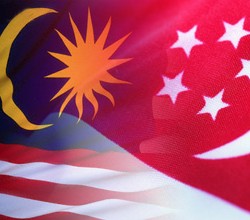With much attention on containing North Korean nuclear and ballistic missiles programs, the North Korean space program also faces objection from the international community. This article claims to mix of North Korean space program developments with its ballistic missiles program to be unjustified, while space program’s potential for approximating a successful Korean unification is undermined. The ultimate goal of the article is to suggest a departure from current hostile attitude to the North Korean space program and to make alternative policy recommendations. The first chapter of the article focuses on a literature review of sources devoted to the North Korean space program, emphasizing the existence of alternative views on it besides a common view of the North Korean space program as a threat to international security. The second chapter describes efforts made by North Korea on international and domestic scenes to confirm its space program legitimacy and make it more transparent, amidst continuing condemnations and sanctions by the United Nations, concluding the positive dynamics in North Korean space sphere. The final chapter is dedicated to possible alternatives to current international policy towards the North Korean space program, underscoring a potentially mutually beneficial cooperation between North Korea and South East Asian perspective space-faring nations. It is claimed that such cooperation might raise the technological level of North Korean economy and narrow the gap between the two Korean states, offering more possibilities for eventual unification.
A Western academic establishment is used to consider and declare the North Korean space program a threat to international security. Thorough studies of space technology development in North Korea are usually connected to that state’s ideology, its songun “military first” policy and, most of all, to North Korean nuclear and missile programs, seeing the North Korean space program as nothing more than a testing ground for its military machines.
It can’t be argued that North Korean space program has its roots in North Korean ballistic missile development efforts, which already have quite a long history, and is still highly intertwined with it, with the progress made in one sphere being mirrored in the other. Surprisingly enough, that intertwining of civilian space and military missile programs often becomes an object of criticizing and even condemnation, even though all other civilian space programs of subjectively more democratic or more developed states have similar military beginnings. Now few analysts writing about the North Korean space program mention the fact that, for example, Sputnik 1, the world’s first artificial satellite, was launched on a rocket, which was, in fact, a copy of the world’s first intercontinental ballistic missile (ICBM) R-7, also known as SS-6 Sapwood.1 In the same manner, no one mentions that Juno I rocket that raised Explorer 1 satellite in 1958 was a direct development of military Redstone missile, which in its turn was designed by Wernher von Braun after the infamous German V-2.2 Ironically enough, Redstone missile was used in a high-atmosphere Hardtack Teak nuclear test, which was conducted to study anti-ballistic missile (ABM) capabilities of nuclear-armed missiles as well as effects of such ABM activities on environment — it proves that Redstone missile could be in fact used as a space weapon.3
The first North Korean orbital space launch attempt was not an exemption from the customary rule that the first orbital space launch vehicle is derived from a military missile: Paektusan rocket, which was to launch North Korea’s first satellite Kwangmyongsong-1 is considered to be a direct descendant of Taepodong-1 IRBM.4 Even though Paektusan launch ultimately failed, it raised a concern especially among American specialists, who labeled the whole North Korean ballistic missile program including Paektusan project a “direct threat to Northeast Asian security”.5 The amount of attention to the North Korean space program is subjectively considerably bigger than to other comparable space programs that have recently reached orbital space launch capability phase and it is still described as a threat. The question is whether the North Korean space program is such a threat as it is described.
This paper argues that the North Korean space program has other purposes than ultimately military ones. The second chapter of the paper reviews the existing literature on the North Korean space program, including a dominating narrative that considers the North Korean space program a security threat, and certain examples of Western literature with more neutral position, with emphasis on technical reviews of North Korean space launch vehicles (SLV).
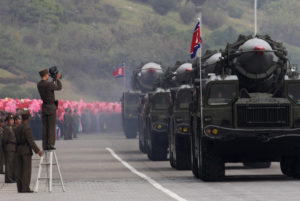
In the third chapter, a review of North Korean space program legitimization efforts is offered, together with UN’s reactions on space program developments, followed by a review of the domestic development of space sphere. The review is purposed to show the efforts being made by North Korean authorities to legitimize space program and emphasize its peaceful nature. The paper will argue that considering those efforts, UN condemnations and sanctions against the space program are controversial, as they contradict general space law regulations. Finally, the seventh chapter makes a recommendation to the international community of to lift restrictions imposed on the North Korean space program and to consider possible effects of wider cooperation between North Korea and other prospective space powers, while emphasizing South East Asia as a region with most such states.
This paper should be thought of as a policy recommendation for the international community that would make it revisit and reconsider its current attitude to the North Korean space program, which is civilian in nature — a point this paper will try to prove.
Overall perception of DPRK space program
Since the first attempt to launch an indigenous satellite on a domestic-made SLV, the North Korean space program has continuously been named a threat by scholars writing about the space program. One issue that can be noticed while researching academic writings about North Korean space program is that most of them were created in the United States or its ally countries, including by scholars serving in state and military institutions, and nearly all those writings develop either a negative view of the North Korean space program, which corresponds with US general policy towards North Korea, or tries to undermine or underestimate it, either intentionally or unintentionally.
For example, in a book devoted to space programs in various Asian states, written by James Clay Moltz, a professor at Naval Postgraduate School operated by the US Navy, North Korean space program is considered to be in an “emerging” space programs group, even despite it has achieved fully indigenous orbital space launch, while South Korean space program, which does not have that achievement yet, has a separate chapter, as already highly developed Japanese, Chinese and Indian space programs do.6 The North Korean space program itself is characterized as having no clear development plan and satellite program, neither having “serious inroads into space” made nor being likely to become “a major space player even anytime in the intermediate future”.7
In another example, an article by Kelly Kuan Shuang, a then-Ph.D. candidate at Maastricht, North Korean space program is openly labeled a potential “threat to the world security in future”, as “space technology can be easily converted to manufacture ballistic missiles”.8 Basing her research on that statement, as well as on instances of trespass of North Korean missiles to foreign airspace, author aims to support the policy of “effective deterring North Korea from its growing space ambitions”.9 Even though Shuang acknowledges that North Korea has built a new space launching facility, known as Sohae Satellite Launching Station, in northwestern corner of its territory in order to make missile flight trajectories less threatening to other states, she still continues to search for methods of making North Korean space program more difficult to develop.10
On the other side, there are more neutral scholarly stances, coming from scholars, who have either Korean studies background or those concentrating on technical details of North Korean missile technology. A prominent expert on Korean security developments, Daniel A. Pinkston from the Monterey Institute Center of Non-Proliferation Studies, confirms that both North and South Korean SLV programs have roots in much older ballistic missiles programs.11 Although Pinkston still considers North Korean SLV development a threat to international security as it was mentioned before, he assumes that “North Korea could present potential for engagement”, even though “any successful engagement strategy would almost certainly be trilateral (U.S.-North Korea-South Korea) or multilateral in structure”.12 He also pays attention to the changes brought by Kim Jong-il’s kangseongdaeguk (“strong and powerful nation”) policy, including Kim Jong-il’s own offer of abandoning long-range ballistic missiles development in exchange for satellite launches, expressed to Russian President Vladimir Putin and then-US Secretary of State Madeleine Albright in early 2000s.13 Pinkston’s relative optimism about the possibility of trade-off between North Korea and the United States is emphasized by negotiations on the North Korean ballistic missile program and exports restrictions between the two nations held from 1996 to 2000, which nearly led to a visit by US President Bill Clinton to Pyongyang to sign an historic agreement that would end the North Korean ballistic program, although that never occurred due to pertaining differences between North Korean and American positions.14 Although Pinkston concludes that “the probability of success [of negotiations between North Korea and the United States] is often low”, he states that “the United States in cooperation with South Korea could offer space engagement as part of cooperative threat reduction program in North Korea”.15
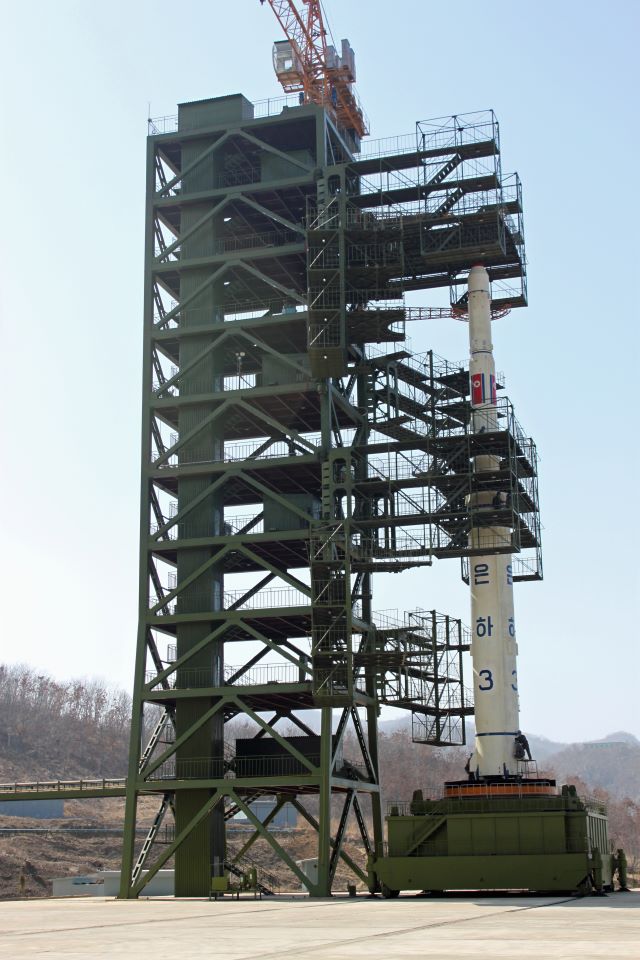
From the technical side, scholars usually point out differences between civilian space programs and military ballistic missiles programs. Michael Elleman from the International Institute of Strategic Studies, for example, confirms that “[h]istory strongly suggests that satellite launch activities have assisted long-range missile development to varying degrees, but civilian space efforts have never played a decisive role in the creation of a long-range missile”.16 When comparing general missile specifications for civilian space programs and ballistic missile programs, Elleman underlines two differences: a need for ballistic missiles to survive “the rigors of re-entry into the atmosphere” and that “[b]efore their flight, space launchers, unlike their ballistic missile counterparts, are prepared over a period of many days, if not weeks”, further acknowledging a limited usefulness of technology used in Unha-type SLVs for ballistic missile development.17
Still, Western scholars who try to deliver a more objective approach tend to lean to mixing space program with military programs, citing a potential future possibility of re-development of current North Korean space technologies into those of military purpose, even if they elaborated another stance before. After explicit explanation of why Unha-3 SLV should not be considered a direct danger, Elleman concludes that “North Korea could contemplate using the Unha-3 as the basis for an ICBM”, although he immediately notes that “[t]he missile would weigh more than 90 tons, making it too large and cumbersome to be viably deployed on a mobile launch platform”, among other difficulties, making Unha-3 convert illogical and ineffective.18
That trend of scholarly leaning to anti-North Korean position constrains the elaboration of a more constructive approach to North Korea, which could solve many security problems. This paper, using the existing research as a basis, would try to convince the necessity of approach change in relation to the North Korean space program, for the sake of stability and security in Northeastern Asia.
DPRK space program legitimization efforts
In comparison to a slow progress in legitimizing its nuclear and ballistic missile programs, North Korea has made considerable effort to legitimize its space program since the beginning of 2009. In this chapter reactions by international bodies, especially the United Nations, its principal organs and specialized agencies, will be analyzed first, alongside North Korean efforts towards its space program legitimization through acceding to space law treaties and voting for the United Nations General Assembly (UNGA) resolutions concerning outer space issues. In the second part, the domestic transformation of the North Korean space program will be described as an effort of making the space program look more transparent.
UN reactions
The initial North Korean orbital space launch attempt from 31 August 1998 of the Kwangmyongsong-1 satellite by Paektusan launcher only caused condemnations by ICAO and IMO, which are the UN specialized agencies, but no reaction was expressed by the UN principal organs.19 It is important to note though that ICAO Resolution A32-6 adopted after the launch was not openly addressing North Korea or any other state, only condemning the danger of the launch for air flights above the Sanriku region of Japan.20 In the same manner, IMO circular only concerned the danger of falling parts for safe navigation, only confirming the occurrence of such event in vicinity of Japan on 31 August 1998.21 The contents of those documents contradict to Shang’s argument that ICAO and IMO “criticized North Korea” for violation of the international norms, even though Shang cites those documents as sources.22 1998 launch was then retrospectively recalled in the preamble of the UN Security Council (UNSC) Resolution 1695 in connection to multiple launches of ballistic missiles, conducted by North Korea on 5 July 2006.23
The second orbital space launch attempt made from the same site, the Tonghae Satellite Launching Ground (also known as Musudan-ri) on 5 April 2009 by Unha-2 launcher, which is considered by some scholars to be derived from Taepodong-2 military missile, was not immediately followed by any forceful reaction from the UN, but it was indirectly condemned by the UN Security Council Resolution 1874 adopted on 12 June 2009, after North Korea conducted a nuclear test on 25 May that year.24 In this resolution, UNSC decided “that the DPRK shall suspend all activities related to its ballistic missile [program] and in this context re-establish its pre-existing commitments to a moratorium on missile launches”.25 On the other hand, no direct condemnation of that launch was mentioned, and North Korea lawfully notified IMO about the April 2009 launch, including launch window dates and coordinates of areas of rocket stages’ projected surface impact, making important progress in security cooperation after non-notified 1998 launch.26
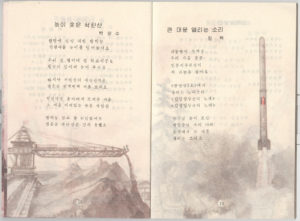
Besides notifying IMO about the SLV stages’ impact zones, North Korea made a considerable start in integrating itself into existing space law architecture. On 5 March 2009 North Korea acceded to the Outer Space Treaty, and on 10 March 2009 to the Convention on Registration of Objects Launched into Outer Space (Registration Convention).27 Since then, North Korea has registered both of its successfully launched satellites (Kwangmyongsong 3-2 from December 2012 launch and Kwangmyongsong-4 from 2016 launch) according to Registration Convention prescriptions.28 North Korea also claims acceding to the Space Liability Convention, and Rescue Agreement.29 North Korean accession to the Space Liability Convention, which governs cases of failed space objects of one states causing damage to another state, is of special importance, as several North Korean space launches have failed with falling objects endangering foreign states’ territory — the accession might be considered another voluntary confidence-building effort made by North Korea in order to express the peaceful nature of its space program.30
According to the 2012 UNSC Report of the Panel of Experts established pursuant to resolution 1874, in May 2011 North Korea completed the construction of Sohae Satellite Launching Station, which had been under construction “for a decade”.31 New space center allowed North Korea to launch its SLVs to the south above seas, and not to the east, as it did before 2012 from Tonghae missile range, with its launchers inevitably flying over Japan with debris impacting Earth surface not far from Japanese coast. North Korea stated that it had changed trajectory in order to respect the sovereignty claims by Japan.32 That statement can be supported by the fact that launches on southward trajectory might be considerably more expensive for North Korea than eastward launches conducted from Tonghae: as it is known from physics, due to Earth’s eastward rotation all eastward space launches have certain velocity bonus from start depending on the launch’s latitude, thus SLVs need less energy and velocity change (and, respectively, less fuel) to deliver spacecraft to orbit, while southward launch does not give any velocity bonus at all. The only benefit North Korea gets from southward launches are its satellites’ polar orbits (that is, orbits which lie above or very close to Earth’s poles), what is especially useful for Earth observation and spy satellites, as satellites in polar orbits can fly over every point on Earth. There can be speculations that North Korea might use its Earth observation satellites for constant surveillance of certain territories, but it is not possible as North Korean satellites have nearly circular orbits at roughly 500 km altitude and a very short orbital period of 94-95 minutes — only a large constellation of such satellites on the same orbit can be used for constant surface surveillance in that case, which is doubtfully a possible option for North Korea at the moment due to technological and financial constraints.33 Furthermore, North Korea does not have any other viable option of spaceport placement due to its geographical limitations: southward launches from North Korea’s Sea of Japan coast would lead to a more dangerous interference with Japanese airspace, while southwards launches from Yellow Sea coast more to the south from Sohae spaceport location would put several South Korean islands into direct danger of impact of rockets’ debris as impact zones of launches would move directly to those islands’ vicinity.34
In recent years, North Korea continues to vote for the UNGA resolutions devoted to security of outer space including the most recent resolutions 70/26 “Prevention of arms race in outer space” and 70/27 “No first placement of weapons in outer space” from 7 December 2015.35 It might be claimed only a declaratory vote with no true commitments, but the fact is that the United States abstained from the vote on resolution 70/26 and voted against the resolution 70/27.36 That voting pattern of the U.S. can be noticed in every resolution on prevention of space arms race since 1982 (that is, even before the admission of North Korea to the UN in 1991), with voting against in 1982-83, 1987-89 and 2005-08, and abstaining in 1984-86, 1990-2004 and since 2009.37 The only occasion when the United States voted for a resolution on prevention of arms race in space was in 1981, before serious considerations about the Strategic Defense Initiative started.38 North Korea has voted for every such resolution since it became UN member state in 1991.39
Domestic space program improvement
In order to underscore the up-to-date transparent character of their space program, the North Korean government started making considerable refurbishments in space program regulation, from its administration to technical mission control. As it was already mentioned before, the first step in space program improvement was already undertaken during Kim Jong-il’s rule, when new Sohae spaceport was built.40 Throughout the Kim Jong-un’s tenure, foreign journalists were allowed to visit Sohae site, while the Korean Central News Agency has generously disseminated photo and video reports from both Sohae spaceport and North Korean new mission control center.41
Overall, Kim Jong-un’s for now five-years rule saw rapid development of space-related infrastructure, including the new General Satellite Control Center in Pyongyang, which was built in 2014-15, as well as mission control center at Sohae, built in 2014.42 In March 2014 North Korean authorities also created the more “journalist-friendly” National Aerospace Development Administration (NADA), which is presumably modelled after NASA, instead of earlier Korean Committee of Space Technology.43
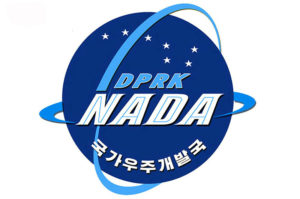
Another side of domestic modernization efforts is issuing legislature related to space. North Korean source specifies that on 1 April 2013 the Supreme People’s Assembly adopted the Space Development Law of the DPRK, which included the establishment of NADA.44 Besides that, North Korea claims to have structured five-yeat and long-term plans for a space program development.45
An important moment is that North Korean authorities try to reach international academic community through their own think-tanks in the matter of space program. It is known that North Korean Ministry of Foreign Affairs includes a think-tank, called the DPRK’s Institute for Disarmament and Peace, which sent an article explaining legitimacy of the North Korean space program to NK News — a prominent website devoted to the distribution of North Korean news to wider international community, especially aimed at academia.46 The use of internationally available website devoted to North Korea by North Korean authorities and academia to share their view on the situation is an unprecedented step that undoubtedly deserves attention, even though their position in some places expresses antagonism towards the U.S. Still, it is possible to notice reasonable claims in the article, like the statement that nuclear powers “should be condemned for their undisguised and dangerous nuclear arms race against the world denuclearization as their launches of space objects are none other than the ballistic rocket tests which can carry the nuclear warheads”.47 North Korean think-tank in that way claims the existence of double standards of the international community in relation to the North Korean space program, and defends the right of ignoring the UNSC resolution which forbid North Korea to launch SLVs, as those resolutions, in North Korean view, do not correspond to the first article of the Outer Space Treaty that confirms the right of all states to participate in space exploration.48
Policy recommendations
Despite the described legitimization efforts, the North Korean space program is still considered to be nothing more than a test-bed for its more controversial military ballistic missiles program, even though technology transfer between the two can hardly be reciprocal.49 North Korean space launches are continued to be labeled as those “which used ballistic missile technology”, although it is essential for space launches to use it.50 North Korean space program developments are also included in the UNSC Panel of Experts reports pursuant to Resolution 1874 (2009), including the most recent one.51
While the rapid development of North Korean nuclear weapons and ballistic missiles programs might be considered as violations of current international law norms, restrictions cast on the North Korean space program are a violation of international space law prescriptions. Although space program becomes an important source of ideological power of the North Korean regime, additional pressure by the international community only bolsters the regime’s influence on the North Korean populace. Being constantly exposed to North Korean authorities’ strong criticism about restrictions imposed on the North Korean space program, North Korean public, which has very limited contacts with outsiders, might only strengthen its support for the regime, instead of starting to confront it. The United Nations and its organs would be characterized as the main obstructors of the North Korean development process, and that would be true in many aspects. Therefore, the very first policy recommendation for the United Nations and its member states is to separate the North Korean space program from ballistic missiles program and other military developments in North Korea, as North Korean authorities have already completed a considerable work in convincing the international community about the purely civilian nature of the space program.
The North Korean space program has a high potential of being used as a way to approach the North Korean regime, as well as North Korean citizens. After lifting restrictions imposed on it, the space program should be allowed to develop within the framework of the space law. A space program might be an important accelerator of general technological development, while technological development, in its turn, causes a rise in the population’s living standards. With this assumption in mind, the North Korean space program would become an important step in narrowing the development gap between North and South Korea and make prospects of peaceful unification more real, as the unification of underdeveloped North Korea with highly developed South would not be a de facto unification, with high level of socioeconomic discrimination between the two parts of the new unified state.
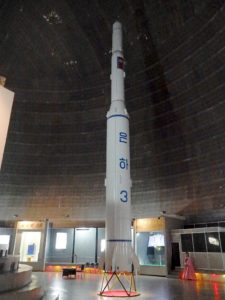
To make technological development more rapid and widespread, cooperation between North Korea and other prospective space-faring nations should be propagated and supported. The most beneficial cooperation could be established between North Korea and prospective space powers in South East Asia (SEA), like Indonesia, Malaysia, Philippines, or Singapore.52 Those nations have a very advantageous geographic position for space launches, as they are positioned either on or close to equator, where the velocity of Earth’s rotation is the highest and therefore less energy would be required for orbital space launches from that area.
Cooperation between North Korea and SEA states could become a relationship of mutual benefit: North Korea would be able to share its experience and working force in spaceport building and SLV technology, while SEA states would share technologies required by North Korea to implement the civilian part of its kansondaeguk ideological concept, leading to the mentioned rise in technological level of the North Korea’s economy. Another beneficial aspect of such cooperation is the possibility of establishing contacts between North and South Korean workers on SEA soil. With direct contact projects such as Kaesong Industrial Complex being highly dependent on the current state of inter-Korean relations, contacts through third countries might be an effective method of inter-Korean rapprochement.
Futility / utility of sanctions
Jeffrey Lewis from Monterey Center of Non-Proliferation Studies emphasizes the ideological value of all these developments, stating that “space exploration is a source of pride for national governments that want to appear powerful and effective”, while “a North Korean propaganda is about suggesting that the Kim family is doing a good job at running the country”.53 Definitely, the North Korean space program is a new ideological tool, used for legitimity of the Kim Jong-un’s regime. On the other hand, we can observe that constant attempts of prohibiting everything that makes the North Korean regime ideologically stronger, which still have not led to the desired outcomes. Moreover, constant pressure on different aspects of North Korean policy, especially on its non-military technological development, most probably would lead to a further alienation of North Korean populace from the international community.
The United Nations, its constituent agencies and organs, as well as its member states should understand that it is actually the North Korean regime who sets the rules of the game. The international criticism and restrictions imposed on North Korea are merely a reaction to North Korean voluntary actions. While most North Korean military actions are provocative, dangerous and violates international law, the international community should not ignore positive dynamics in certain spheres. With North Korea acceding to and abiding by the international space law norms, space sphere has become one of the fields that are worth paying attention to. Constant mixing of the North Korean space program with ballistic missiles development only postpones North Korean technological development and further reduces the likelihood of fast Korean unification.
The international community should consider allowing North Korea to prosper technologically, as technological prosperity would then spillover to economy and human rights spheres, therefore making North Korea better prepared for possible unification. The space program as a source of innovative technologies is an opportunity to solve many internal and international problems related to North Korea.
Sources
- David S. F. Portree, „NASA’s Origins and the Dawn of the Space Age“ (NASA, February 8, 2005), http://www.hq.nasa.gov/office/pao/History/40thann/nasaorigins.htm (accessed December 2016); and Asif A. Siddiqi, „Korolev, Sputnik, and The International Geophysical Year,” Reconsidering Sputnik: Forty Years Since the Soviet Satellite. (Washington, DC: NASA, 1997), 1-13.
- Wernher von Braun, „The Redstone, Jupiter, and Juno,“ Technology and Culture 4: 4 (1963): 452-65.
- P. Gladeck, et al., Operation Hardtack I 1958 (Santa Barbara, CA: Kaman Tempo, 1982), 266.
- Daniel A. Pinkston, „North and South Korean Space Development: Prospects for Cooperation and Conflict,“ Astropolitics 4: 2 (2006): 207-27.
- Daniel A. Pinkston, The North Korean Ballistic Missile Program (Carlisle, PA: Strategic Studies Institute, 2008), v.
- James Clay Moltz, Asia’s Space Race: National Motivations, Regional Rivalries, and International Risks (New York, NY: Columbia University Press, 2012), 6-7.
- , 184-88.
- Kelly Kuan Shang, „Trespass to Airspace: How to Deter North Korea from Its Space Ambitions?,“ Journal of East Asia and International Law. 6: 1 (2013): 221-40.
- Ibid, 222.
- Ibid, 229-31.
- Pinkston (note 4): 208.
- Ibid, 218.
- Ibid, 219.
- Ibid, 220.
- Ibid, 221.
- Michael Elleman, „Prelude to an ICBM?: Putting North Korea’s Unha-3 Launch Into Context,“ Arms Control Today 43: 2 (2013): 8.
- Ibid.
- Ibid.
- Shang (note 8): 223.
- International Civil Aviation Organization, Assembly Resolutions in Force (as of 4 October 2013) (2014), I-43.
- International Maritime Organization, MSC/Circ. 893, https://docs.imo.org/Shared/Download.aspx?did=11116 (accessed December 2016).
- Shang (note 8): 223.
- United Nations Security Council, S/RES/1695, https://documents-dds-ny.un.org/doc/UNDOC/GEN/N06/431/64/PDF/N0643164.pdf?OpenElement (accessed December 2016).
- Shang (note 8): 223, 226; United Nations Security Council, S/PRST/2009/7, https://documents-dds-ny.un.org/doc/UNDOC/GEN/N09/301/03/PDF/N0930103.pdf?OpenElement (accessed December 2016); and David Wright, „An Analysis of North Korea’s Unha-2 Launch Vehicle,“ Union of Concerned Scientists, March 20, 2009, http://www.ucsusa.org/sites/default/files/legacy/assets/documents/nwgs/Wright-Analysis-of-NK-launcher-3-18-09.pdf (accessed November 2016).
- United Nations Security Council, S/RES/1874, https://documents-dds-ny.un.org/doc/UNDOC/GEN/N09/368/49/PDF/N0936849.pdf?OpenElement (accessed December 2016).
- International Maritime Organization, SN.1/Circ.278, https://docs.imo.org/Shared/Download.aspx?did=53419 (accessed December 2016).
- United Nations. C.N.154.2009.TREATIES-1 (Depositary Notification), https://treaties.un.org/doc/Publication/CN/2009/CN.154.2009-Eng.pdf (accessed December 2016); and United Nations Office for Disarmament Affairs, “Democratic People’s Republic of Korea: Accession to Outer Space Treaty,” UNODA, March 5, 2009, http://disarmament.un.org/treaties/a/outer_space/democraticpeoplesrepublicofkorea/acc/moscow (accessed December 2016).
- United Nations Office for Outer Space Affairs, “Online Index of Objects Launched into Outer Space,” UNOOSA, 2016, http://www.unoosa.org/oosa/osoindex/search-ng.jspx?lf_id=#?c=%7B%22filters%22:%5B%7B%22fieldName%22:%22en%23object.unRegistration.unRegistered_s1%22,%22value%22:%22Yes%22%7D,%7B%22fieldName%22:%22en%23object.launch.stateOrganization_s%22,%22value%22:%22De (accessed November 2016).
- Kim Chol Min, „North Korea has legitimate right to satellite launches,“ NK News, April 6, 2016, https://www.nknews.org/2016/04/north-korea-has-legitimate-right-to-satellite-launches/ (accessed November 2016).
- United Nations General Assembly, A/RES/2777 (XXVI), http://www.un.org/en/ga/search/view_doc.asp?symbol=A/RES/2777(XXVI) (accessed December 2016).
- Jeremy Laurence, „North Korea completes second missile site,“ Reuters, February 17, 2011, http://www.reuters.com/article/us-korea-north-missile-idUSTRE71G0CX20110217 (accessed November 2016); and United Nations Security Council, S/2012/422, https://documents-dds-ny.un.org/doc/UNDOC/GEN/N12/376/10/PDF/N1237610.pdf?OpenElement (accessed December 2016).
- Shang (note 8): 231.
- United Nations Secretariat, ST/SG/SER.E/662, https://documents-dds-ny.un.org/doc/UNDOC/GEN/V13/803/53/PDF/V1380353.pdf?OpenElement (accessed December 2016); United Nations Secretariat, ST/SG/SER.E/768, https://documents-dds-ny.un.org/doc/UNDOC/GEN/N16/176/83/PDF/N1617683.pdf?OpenElement (accessed December 2016); and David Wright, Laura Grego, and Lisbeth Gronlund, The Physics of Space Security: A Reference Manual (Cambridge, MA: American Academy of Arts and Sciences, 2005), 35-36.
- International Maritime Organization, SN.1/Circ.307, https://docs.imo.org/Shared/Download.aspx?did=71599 (accessed December 2016); International Maritime Organization, SN.1/Circ.320, https://docs.imo.org/Shared/Download.aspx?did=75603 (accessed December 2016); and International Maritime Organization, SN.1/Circ.332, https://docs.imo.org/Shared/Download.aspx?did=95715 (accessed December 2016).
- United Nations General Assembly, A/70/PV.67, http://www.un.org/en/ga/search/view_doc.asp?symbol=A/70/PV.67 (accessed October 2016), 6-7.
- Ibid.
- United Nations, „General Assembly – Quick Links,“ Dag Hammarskjöld Library, October 20, 2016, http://research.un.org/en/docs/ga/quick/regular/71 (accessed December 2016).
- United Nations General Assembly, A/36/PV.91, https://documents-dds-ny.un.org/doc/UNDOC/GEN/NL8/607/81/PDF/NL860781.pdf?OpenElement (accessed December 2016), 1623.
- United Nations (note 37).
- Laurence and United Nations Security Council (note 31).
- Park Ju-min, and Louis Charbonneau, „North Korean rocket puts object into space, angers neighbors, U.S,“ Reuters, February 8, 2016, http://www.reuters.com/article/us-northkorea-satellite-idUSKCN0VG00H (accessed December 2016).
- Jeffrey Lewis, „Is North Korea Gearing Up for Another Space Launch?,“ 38 North, June 2, 2015, http://38north.org/2015/06/jlewis060215/ (accessed December 2016).
- Ibid.
- Kim (note 29).
- Ibid.
- Ibid.
- Ibid.
- ; and United Nations General Assembly, A/RES/2222(XXI), http://www.un.org/en/ga/search/view_doc.asp?symbol=A/RES/2222(XXI) (accessed December 2016).
- Elleman (note 16).
- United Nations Security Council, S/RES/2270 (2016), https://documents-dds-ny.un.org/doc/UNDOC/GEN/N16/058/22/PDF/N1605822.pdf?OpenElement (accessed December 2016), 2.
- United Nations Security Council, S/2016/157, https://documents-dds-ny.un.org/doc/UNDOC/GEN/N16/010/96/PDF/N1601096.pdf?OpenElement (accessed December 2016), 19-21.
- Moltz (note 6): 180-84, 191-95.
- Lewis (note 42).



